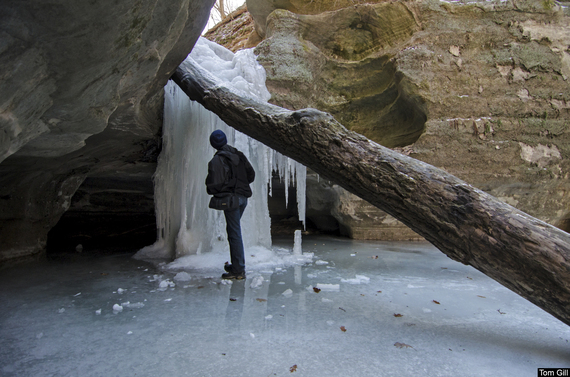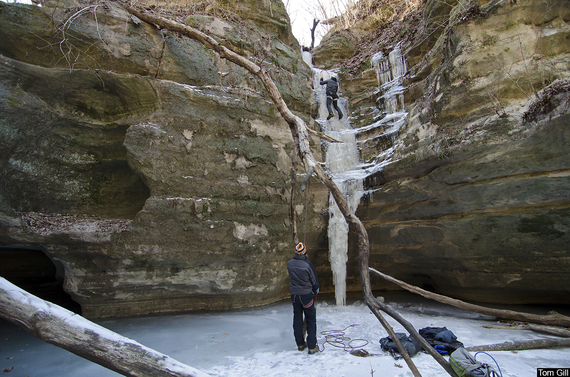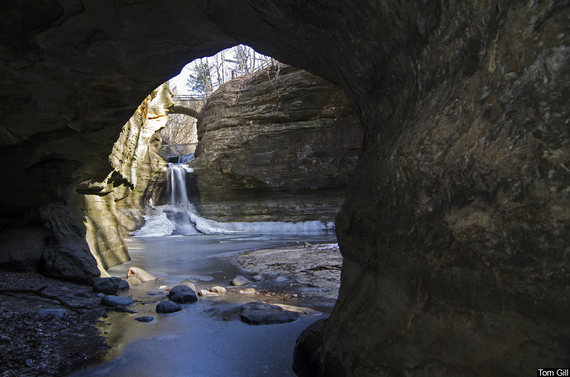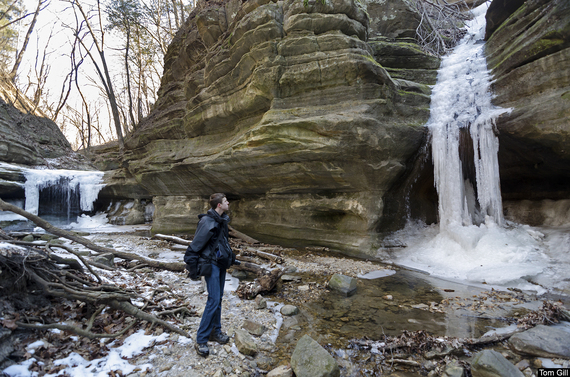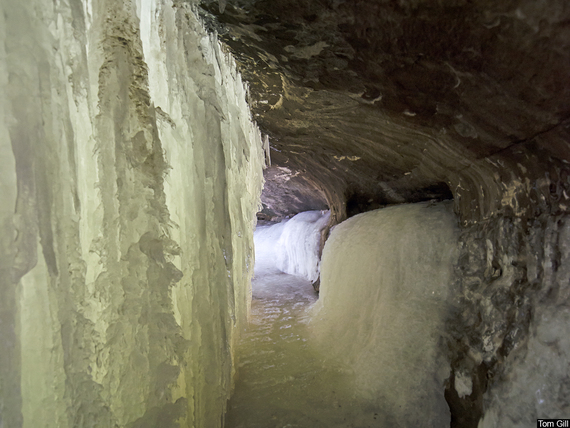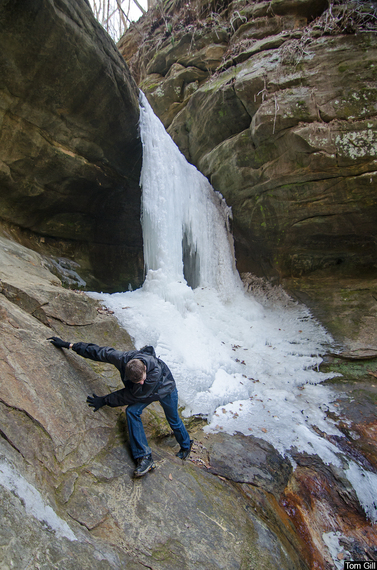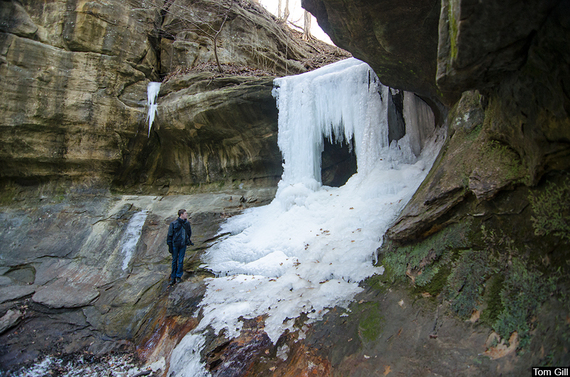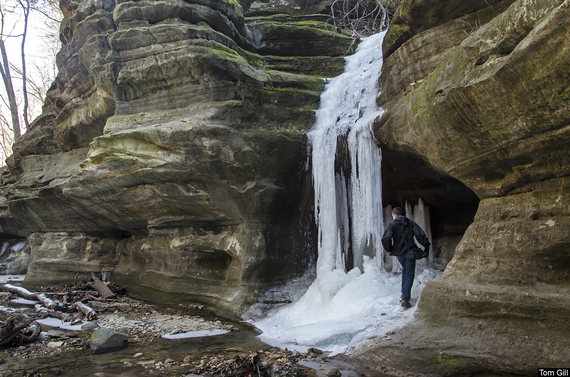Continuing our search for frozen waterfalls, we happened upon the falls in Kaskaskia Canyon, another canyon in Illinois' Starved Rock State Park.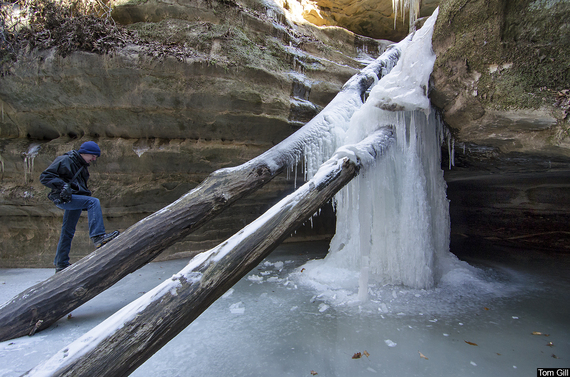
While not as tall as most others in the park, this waterfall has some interesting components. The logs that washed into the canyon provide the perfect attachment for the ice, helping the icefall to form a wide and hollow column. The water continues to flow inside the ice column, making exploration behind the icefall challenging at best, and potentially dangerous. The pool formed at the foot of this waterfall is deep compared to other parts of the stream, so falling through the ice here could result in a plunge into four feet or more of frigid water.
The cracking ice, and six inches of puddled water, kept us from heading under the outcropping to explore the icefall from behind, but other visitors haven't always heeded these indicators. Viewers of these photos commented on the depth of the water in this canyon, with one of them stating he fell through, into waist-deep water, a few years past.
As we entered the canyon, we heard the distinct sounds of ice climbers attempting a climb up a cascading icefall. This icefall lacked the freestanding column formation, but was a much safer attempt due to the ice contact with the canyon walls. The climbers' gear and experience made the ascent look easy, as they rather quickly made their way up the icefall. Ice climbing is anything but easy, made more difficult by the cold and wet conditions associated with frozen waterfalls.
About two miles from Starved Rock State Park, Matthiessen State Park offers similar terrain, but in a more compact area. Divided into the lower dells and upper dells, both areas provide ample opportunity for viewing icefalls. In addition to the waterfalls, the lower dells contains a few caves perfect for exploration. These caves are shallow, but large enough inside for adults to stand upright.
Seen from inside the cave, Cascade Falls was not yet frozen, but other waterfalls in the park were frozen solid. The two waterfalls beyond Cedar Point were ready for exploration. These icefalls often create ice caves when they seal up the openings of the rock overhang.
Seen from the rim of the canyon, the 15-foot tall icefall appears tiny, but from this vantage point, much more of the complete icefall is visible. This area above the waterfall contains several other short waterfalls, which are great fun to explore as well.
Water continues to flow around each of these waterfalls, so venturing inside the ice caves can get a bit wet, but the opportunity to view the ice from behind is worth the minor discomfort.
Never the same twice, the formations created by the ice entice visitors to get a closer view. Sometimes that means venturing onto the rock face itself.
During this visit, it was not possible for us to get behind the falls at Devil's Paintbox to peer through the "window" in the icefall. Maybe next time.
The Midwest experienced a relatively warm winter this year, and while the icefalls were not as significant as years past, I cherished the opportunity to explore them. Now melted, the flowing waterfalls prove once again the fleeting nature of Illinois' icefalls.

